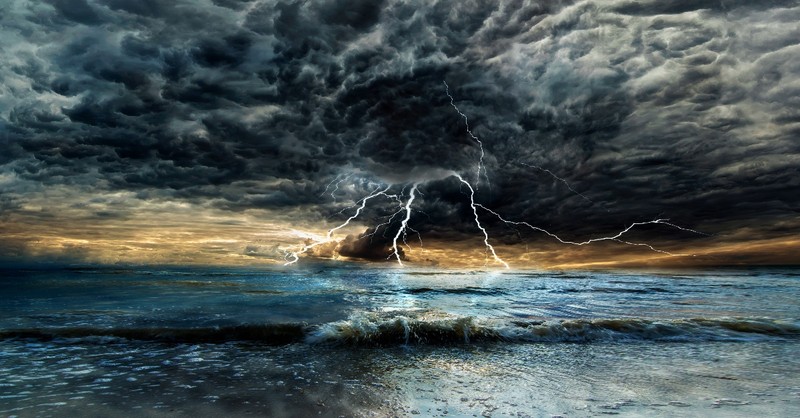No one knows when the next big storm will hit, but everyone should be prepared for it. Storms can range from being a nuisance with some minor damage to leaving you without power or water for weeks on end. If you are unfortunate enough to have your home damaged by an unexpected storm, then follow these 14 steps, which are in no particular order, to take care after the storm hits and minimize any damages that it may cause.
Ensure it’s safe for you and your family to come out: Before you do anything, it is essential to make sure that everyone in your family is safe. Do not run around the house trying to save things or assess damage until you are confident that no one has been seriously injured by flying debris or falling objects.
Check on neighbors who may be elderly, disabled, or seriously injured: The storm damage may limit access into some parts of town, so it’s essential not to neglect those around you who might need additional help. If you know of anyone in your neighborhood who might be elderly, disabled, or seriously injured, make sure that they are okay before continuing with the rest of these steps.
Remove any standing water: Once all members of your household have been accounted for and there are no injuries, start clearing away as much standing water from inside the building as possible. Standing water can cause mold if left unchecked so use extreme caution when dealing with this situation.
Do a walk-through outside: After ensuring that everyone is okay, step out into your storm-damaged yard, where additional hazards may be present due to downed power lines or broken tree limbs resting against structures on your property.
Secure your property: While you are outside, do what you can to secure the exterior of your home. If any loose debris has fallen onto your roof or large branches are resting against windows and doors, ensure they have been removed before returning inside.
Check for gas leaks: Before doing anything else, turn off all appliances to minimize the risk of electrical sparking, which could cause a fire. Once this is done, check around the entire house for any signs of natural gas leaking from broken pipes or cracked lines connected to an outdoor grill tank.
Call for help: After doing what you can to secure and clear storm damage around your house, call local authorities like the public works department if debris is blocking roadways so that emergency vehicles can get through when needed most.
Avoid using the oven for cooking: If you manage to get your electricity back on, it is best not to use the oven or stovetop for cooking purposes. They may be damaged and pose a risk of causing an electrical fire while operating. Instead, opt for electric kettles and portable grills, which will allow you to prepare food without worrying about any additional safety issues that could arise from attempting other types of traditional cooking methods during this time.
Close off rooms with ventilation systems: Depending upon how long your power was out, or if there were any temporary boil advisories put in place by local authorities, make sure all bedrooms have their windows closed along with other parts of your home such as bathrooms and kitchens where ventilation systems are in place.
Do not use water from streams, rivers, or other bodies of water: Unless you know for sure that the local public works department has released a statement saying it is safe to do so, avoid using any standing floodwater as your source for drinking and cooking purposes. As much as possible, try to store at least one gallon per person (including pets), which can be used if needed during this period when tap water isn’t available due to storm damage repair work being done around town.
Clean up debris: After all members of your family have been accounted for and base camp has been established, there will be plenty of non-electric tasks that need attention before anyone should even think about attempting repairs on damaged walls or ceilings since these surfaces may have been compromised and no longer fit for use.
Repair storm damage: Once the power has come back, it is safe to start making temporary repairs with drywall or plywood. Make sure you take precautions such as wearing a respirator mask and gloves to avoid breathing in any potentially harmful dust particles that could cause an asthma attack if inhaled at high levels over time.
Make sure insurance information is available: It doesn’t matter whether or not your home sustained significant storm damage during the event itself. Be sure to keep all relevant policy paperwork (including flood coverage) together somewhere. Make sure everyone knows how to access this important documentation without going through another step-by-step checklist each time it is necessary.
Be patient with restoration services: Natural disasters often result in massive power outages, which means it may take several days (or weeks) before standard electric service is restored to everyone affected by the storm. Ensure not to overload any generators or electrical panels during this period. It could cause another fire hazard on top of already being extremely dangerous due to downed power lines.
Storm damage can seriously impact your daily life if you don’t know the best steps to take to minimize its effects and get back on track as soon as possible. While no one wants to go through such an experience, having a plan of action like the ones listed above available for reference will make coping with loss much less stressful while also ensuring that everyone stays safe until help arrives to assist them in their time of need. Make sure all members of your family have been accounted for before starting any storm cleanup or other temporary repairs around the home.

